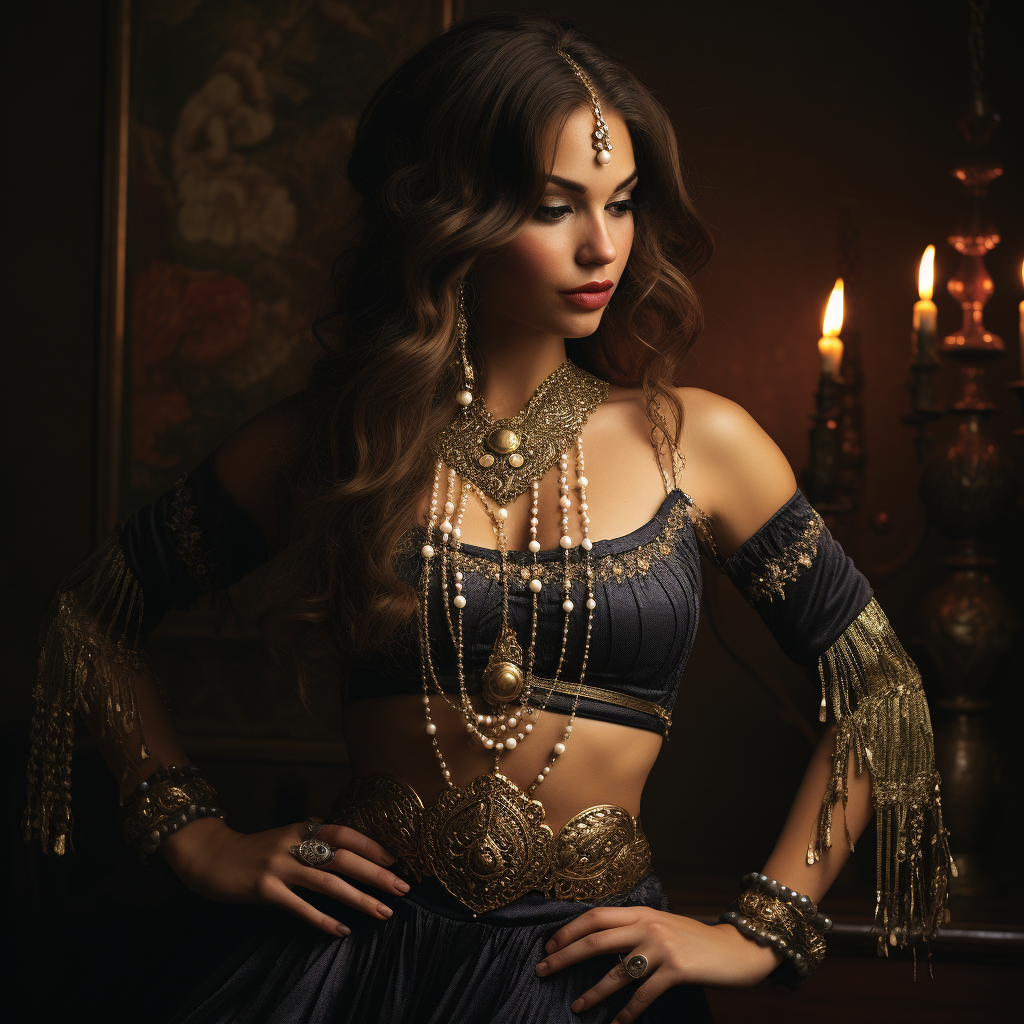Belly dancing has a long and rich history originating in the Middle East, with evidence tracing it back to Ancient Egypt over 6,000 years ago. The dance likely started as a celebration of femininity and fertility rituals.
- Belly dance movements involve undulations and shimmies using the hips, torso, chest, and shoulders. Other common moves are hip drops, circles, lifts, pops, accents, twists, and slides.
- The term “belly dance” comes from the French phrase “danse du ventre” meaning “dance of the stomach”. Sol Bloom first used the English term at the 1893 Chicago World’s Fair for Middle Eastern dancers.
- Belly dancing grew in popularity and spread worldwide throughout the 20th century. It evolved into many different styles based on country and region in both costumes and dance moves.
- Common props used in belly dancing are veils, swords, canes, zills/finger cymbals. The most popular styles today include Raqs Sharqi, Baladi, Saidi, Khaleegy, Melaya Leff, Gawazee, Cabaret, Tribal Fusion.
- Belly dancing has been featured in many Hollywood films and gained international fame and popularity as both a cultural and entertainment dance form.
Belly Dancing in UAE
- Belly dancing has deep cultural roots and significance in the UAE and Middle East region. It originated as a traditional folk dance celebrating femininity.
- Known as raqs sharqi in Arabic, it is considered an important part of the cultural heritage. Belly dancing reflects grace, joy and community.
- Major hotels and resorts in UAE showcase belly dancing performances as entertainment for tourists. It is a popular attraction.
- Belly dancing provides economic livelihood for many dancers in the region’s tourism industry.
- Unlike Western perceptions, belly dancing has social acceptance in UAE and is not viewed as vulgar.
- It can signify women’s empowerment and confidence. Many Emirati women learn belly dancing.
- Main styles in UAE are Khaleegy, Baladi, Shaabi. Dancers wear traditional bedlah, kaftan, galabeya costumes.
- Common props used are finger cymbals (zills), veils, swords, and doumbek drums.
- Belly dancing shows often feature live music with oud, tabla, and other instruments.
Reasons Why Belly Dancing is Allowed
- Belly dancing has deep cultural roots in UAE and Middle East as a traditional dance celebrating joy and femininity.
- It provides economic benefits to UAE’s tourism, hospitality and entertainment industries. Hotels showcase belly dancing performances.
- Belly dancing has social acceptance unlike Western views. It is seen as graceful self-expression, not vulgar.
- Main reasons belly dancing is allowed in UAE:
- Originated as traditional folk dance in the region
- Strong cultural heritage and identity
- Generates tourism and jobs in hospitality industry
- Social norms do not view it as obscene
- Signifies women’s empowerment
- Conservative Islamic scholars may discourage revealing costumes but accept clothed dancing.
- Terms like “belly dance” and cultural appropriation debates arise from Western views. Locals use Arabic terms.
- UAE promotes belly dancing as celebration of their culture, not foreign stereotypes.
Global Popularity of Belly Dancing
- Belly dancing spread globally in the 20th century and became popular worldwide as a cultural dance form.
- Sol Bloom coined the term “belly dance” at the 1893 Chicago World’s Fair for Middle Eastern dancers.
- Belly dancing gained fame through Hollywood films like Cleopatra. Dancers like Samia Gamal brought it to Western audiences.
- Many fusions emerged like tribal fusion belly dance with influences from American Tribal Style.
- Costumes and props evolved to incorporate veils, swords, canes. Bedlah bra tops and skirts became a signature look.
- Belly dancing became associated with foreign stereotypes of the “exotic Orient” in the West.
- Debates occurred over cultural appropriation and using the Arab-derived term raqs sharqi.
- Today it remains popular worldwide both as entertainment and for fitness. Major styles are Cabaret, Tribal Fusion, Egyptian.
- Global belly dancing community connects via festivals, competitions like Bellydance Superstars.
Conclusion
- In summary, belly dancing is allowed and accepted in the UAE due to its cultural roots, economic benefits, and social norms.
- As a traditional folk dance in the region, it holds great cultural significance and heritage.
- Belly dancing attracts tourism and provides jobs in the hospitality industry.
- Unlike Western views, it has social acceptance in UAE as graceful self-expression.
- Belly dancing empowers women and connects to long-held traditions.
- Conservative elements may oppose revealing costumes but accept respectful dancing.
- Terms like “belly dance” come from Western views. Locals use raqs sharqi.
- The UAE proudly promotes belly dancing as a celebration of their cultural identity.
- In conclusion, belly dancing is an integral part of UAE’s culture with economic and social benefits.
